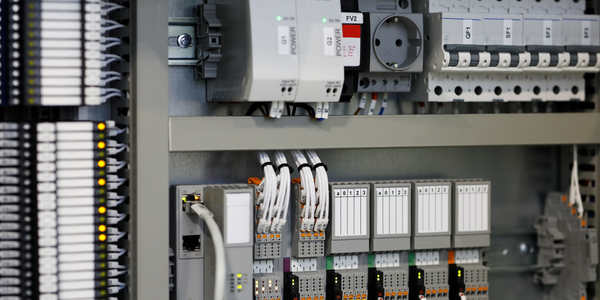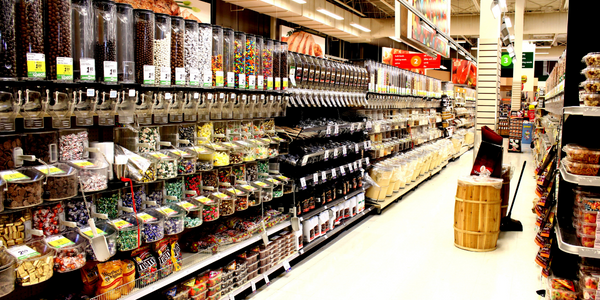公司规模
Mid-size Company
地区
- America
国家
- United States
产品
- DocuWare
技术栈
- AI
实施规模
- Enterprise-wide Deployment
影响指标
- Productivity Improvements
- Cost Savings
技术
- 应用基础设施与中间件 - 数据交换与集成
适用行业
- 零售
用例
- 库存管理
服务
- 数据科学服务
关于客户
Kowalski's Markets 成立于 1983 年,是一家高档美食市场,在双城地区拥有 12 家分店。市场提供各种本地、可持续、纯天然或有机产品,包括肉类、海鲜、熟食和寿司、农产品、面包、手工奶酪、特色杂货、乳制品、冷冻食品、葡萄酒和烈酒、礼品和鲜花部门。随着公司的发展,它在管理纸质会计记录方面面临挑战,导致效率低下,需要更精简的解决方案。
挑战
随着 Kowalski's Markets 的成长和扩张,管理纸质会计记录变得非常困难。一名公司会计员工每周需要花 3-4 天的时间将发票信息输入会计系统。部门经理也在输入发票信息以编制每周报告。这个过程既耗时又低效,因此需要更精简的解决方案。
解决方案
该解决方案在总部商店试行了几个月,然后在接下来的 3 个月内陆续推广到所有 12 家商店。如今,每家商店都会扫描发票,并使用 DocuWare 的智能索引功能自动编制索引,这是一项人工智能服务,可以学习如何“识别”页面上任何位置的索引词。接下来,发票会以电子方式发送给部门主管,部门主管会修复任何缺失或不正确的索引词并审查成本。使用电子印章,发票会被发送到公司会计办公室,在那里进行最后审查,然后存储在 DocuWare 中。
运营影响
数量效益

Case Study missing?
Start adding your own!
Register with your work email and create a new case study profile for your business.
相关案例.

Case Study
Improving Production Line Efficiency with Ethernet Micro RTU Controller
Moxa was asked to provide a connectivity solution for one of the world's leading cosmetics companies. This multinational corporation, with retail presence in 130 countries, 23 global braches, and over 66,000 employees, sought to improve the efficiency of their production process by migrating from manual monitoring to an automatic productivity monitoring system. The production line was being monitored by ABB Real-TPI, a factory information system that offers data collection and analysis to improve plant efficiency. Due to software limitations, the customer needed an OPC server and a corresponding I/O solution to collect data from additional sensor devices for the Real-TPI system. The goal is to enable the factory information system to more thoroughly collect data from every corner of the production line. This will improve its ability to measure Overall Equipment Effectiveness (OEE) and translate into increased production efficiencies. System Requirements • Instant status updates while still consuming minimal bandwidth to relieve strain on limited factory networks • Interoperable with ABB Real-TPI • Small form factor appropriate for deployment where space is scarce • Remote software management and configuration to simplify operations

Case Study
Digital Retail Security Solutions
Sennco wanted to help its retail customers increase sales and profits by developing an innovative alarm system as opposed to conventional connected alarms that are permanently tethered to display products. These traditional security systems were cumbersome and intrusive to the customer shopping experience. Additionally, they provided no useful data or analytics.

Case Study
How Sirqul’s IoT Platform is Crafting Carrefour’s New In-Store Experiences
Carrefour Taiwan’s goal is to be completely digital by end of 2018. Out-dated manual methods for analysis and assumptions limited Carrefour’s ability to change the customer experience and were void of real-time decision-making capabilities. Rather than relying solely on sales data, assumptions, and disparate systems, Carrefour Taiwan’s CEO led an initiative to find a connected IoT solution that could give the team the ability to make real-time changes and more informed decisions. Prior to implementing, Carrefour struggled to address their conversion rates and did not have the proper insights into the customer decision-making process nor how to make an immediate impact without losing customer confidence.

Case Study
Ensures Cold Milk in Your Supermarket
As of 2014, AK-Centralen has over 1,500 Danish supermarkets equipped, and utilizes 16 operators, and is open 24 hours a day, 365 days a year. AK-Centralen needed the ability to monitor the cooling alarms from around the country, 24 hours a day, 365 days a year. Each and every time the door to a milk cooler or a freezer does not close properly, an alarm goes off on a computer screen in a control building in southwestern Odense. This type of alarm will go off approximately 140,000 times per year, equating to roughly 400 alarms in a 24-hour period. Should an alarm go off, then there is only a limited amount of time to act before dairy products or frozen pizza must be disposed of, and this type of waste can quickly start to cost a supermarket a great deal of money.

Case Study
Supermarket Energy Savings
The client had previously deployed a one-meter-per-store monitoring program. Given the manner in which energy consumption changes with external temperature, hour of the day, day of week and month of year, a single meter solution lacked the ability to detect the difference between a true problem and a changing store environment. Most importantly, a single meter solution could never identify root cause of energy consumption changes. This approach never reduced the number of truck-rolls or man-hours required to find and resolve issues.








